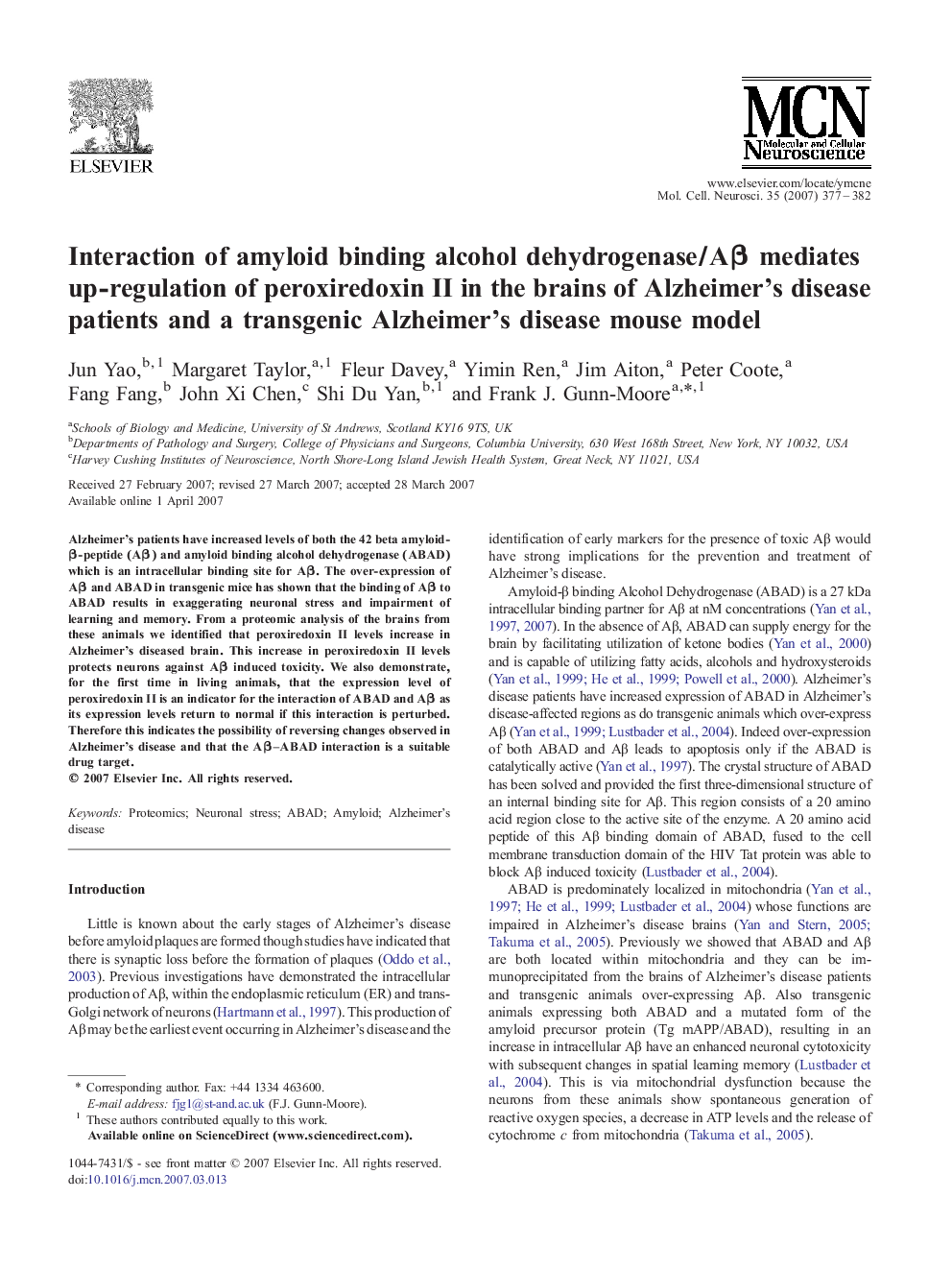| Article ID | Journal | Published Year | Pages | File Type |
|---|---|---|---|---|
| 2199412 | Molecular and Cellular Neuroscience | 2007 | 6 Pages |
Alzheimer’s patients have increased levels of both the 42 beta amyloid-β-peptide (Aβ) and amyloid binding alcohol dehydrogenase (ABAD) which is an intracellular binding site for Aβ. The over-expression of Aβ and ABAD in transgenic mice has shown that the binding of Aβ to ABAD results in exaggerating neuronal stress and impairment of learning and memory. From a proteomic analysis of the brains from these animals we identified that peroxiredoxin II levels increase in Alzheimer’s diseased brain. This increase in peroxiredoxin II levels protects neurons against Aβ induced toxicity. We also demonstrate, for the first time in living animals, that the expression level of peroxiredoxin II is an indicator for the interaction of ABAD and Aβ as its expression levels return to normal if this interaction is perturbed. Therefore this indicates the possibility of reversing changes observed in Alzheimer’s disease and that the Aβ–ABAD interaction is a suitable drug target.
